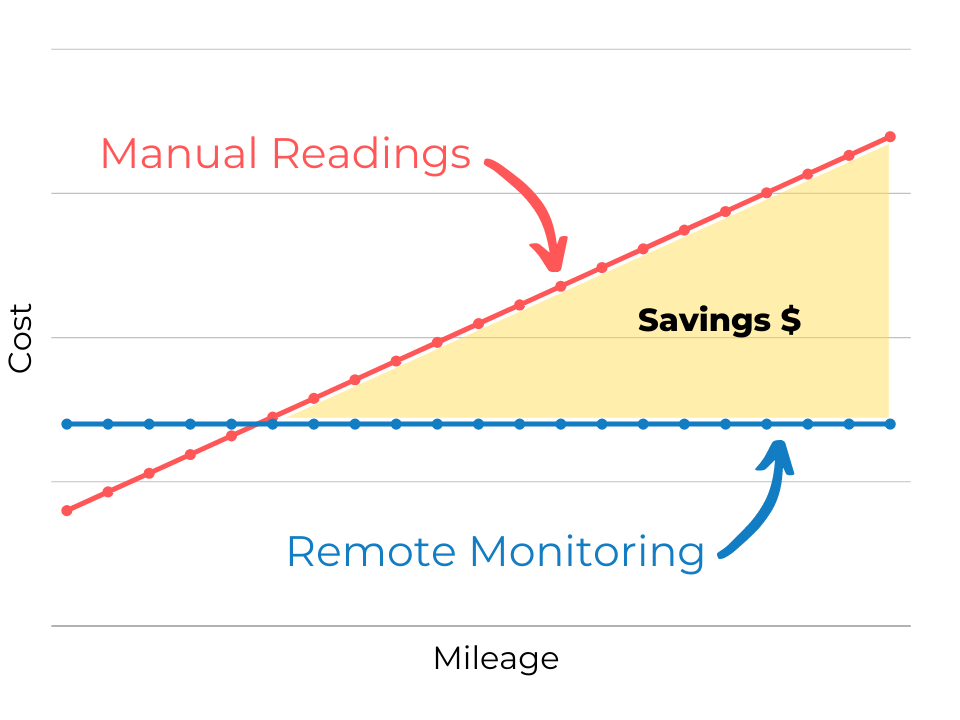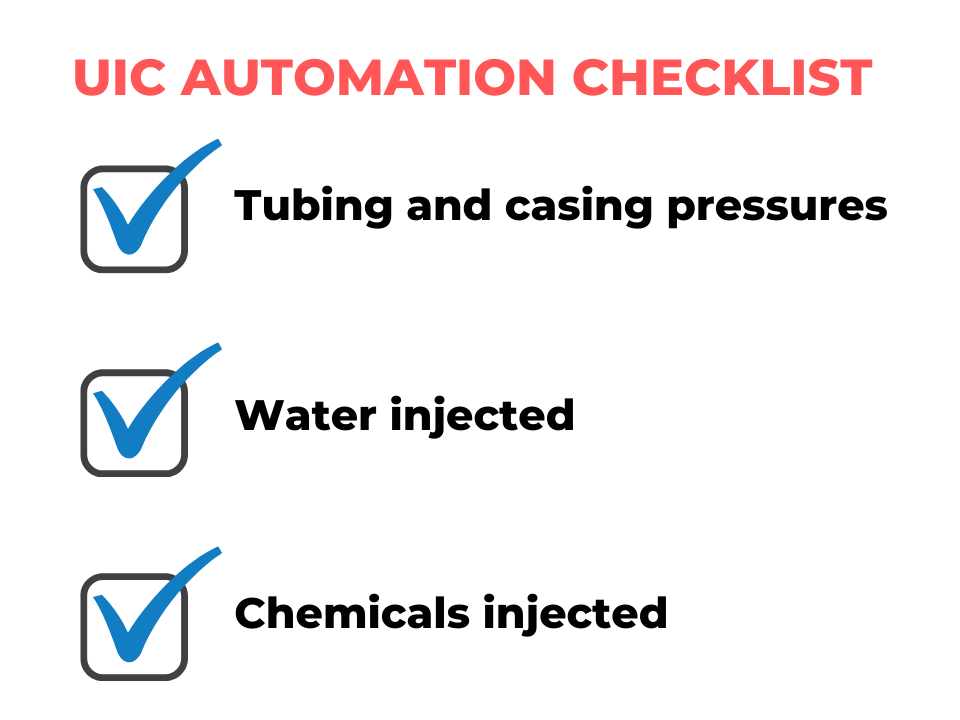
News, Insights, and more on Industrial IoT

Injection wells are important in two key ways - they help us dispose of produced water, as well as implement enhanced oil recovery (EOR). At the same time, injection wells pose some risk to underground sources of drinking water (USDWs) if not managed properly. Consequently (and understandably), underground injection is highly regulated.
Due to these regulations, some of the biggest operational headaches oil and gas companies face stem from avoiding groundwater contamination from failures on underground injection and disposal wells. Preventing contamination from underground injection is paramount for oil and gas companies looking to avoid fines and remediation costs.
For oil and gas companies, the best way to prevent groundwater contamination is to set up rigorous underground injection control (UIC) compliance programs for injection wells.
In many states, underground injection is regulated at the federal level by the Environmental Protection Agency (EPA). In some states with higher levels of oil and gas activity, like California or Texas, the UIC program is administered by state oil and gas regulatory agencies (e.g., CalGEM and Texas RRC). Regardless of who is in charge, regulations are created and fines imposed for violations so that groundwater contamination can be minimized.
As a side note, running effective UIC programs is also a big step in the right direction towards maintaining sustainable and compliant environmental, social, and governance (ESG) practices. This may not matter to most production supervisors or foremen, but it matters tremendously to their company’s executives. Maintaining proper UIC programs to prevent groundwater contamination boosts ESG profiles. It’s a great way for production operators to make their bosses happy.
Given all of this context, we wanted to share three tips to help you simplify and improve your UIC program and implement compliant practices without breaking the bank.
Read how an LA Basin Operator implemented automated mechanical integrity tests and water volume monitoring on hundreds of injection wells to reduce the cost of regulator compliance by 30%.
EPA programs and state-run agencies mandate both internal and external mechanical integrity tests (MIT)for injection wells. These tests are designed to detect and prevent casing leaks and fluid movement that could end up contaminating water sources. One of the most important aspects of mechanical integrity testing is identify existing or potential casing leaks that can lead to groundwater contamination.
There are two main ways to conduct well casing mechanical integrity tests: you can occasionally pressurize wells with liquid or gas. Or, you could monitor pressure at a certain frequency on a continuous basis.
The first approach - pressure testing - is feasible, but onerous. You have to set up a source of pressurized liquid or gas, which only adds more infrastructure that your team has to manage. On top of that, you have to take the well off of injection, slowing down your operations. At a time when profit margins are already slim, this is not a desired outcome.
The bottom line: occasional pressure testing is costly and burdensome. Most operators want to pressure test as little as possible so as to satisfy regulatory standards.
Fortunately, many agencies either don’t require pressure testing, or allow longer periods between pressure tests, when continuous monitoring is implemented. In fact, per 40 CFR § 146.8(b), the EPA suggests that with effective continuous monitoring in place, pressure tests are not required, so long as continuous monitoring can effectively demonstrate mechanical integrity of the casing. (Note that some state agencies still require periodic pressure testing).
Now, with respect to continuous monitoring, you could either do this manually by sending pumpers around in trucks to record pressure readings. Or, you could automate the process entirely with a remote monitoring system.
There are a lot of reasons not to go the manual route. It’s expensive, both from a fuel and labor standpoint, and error-prone. “Greasebooks” get smudged, buttons get fat-fingered, people make mistakes...
Inaccurate data doesn’t just represent a compliance risk, but also a safety risk. If your numbers are wrong, you might miss a casing leak in the making. If you don’t catch the failure in time, it could grow into a huge headache (and safety hazard!) for your operators. Running a slickline isn’t cheap, and it’s something most operators want to avoid.
Now, instead of doing things manually, you can automate data collection at your injection sites with a UIC remote monitoring system that will gather pressure and flow readings at regular intervals, send alerts when necessary, and generate reports that simplify regulatory compliance.
Doesn’t this sound easier?
It does, because it is.
Today, you can install accurate, low-cost, and low-power remote monitoring sensors that can monitor well activity every day for years on end. If you wanted to, you could configure sensors to check in on your wells every 5 minutes, enabling you to catch issues ASAP.

Remote monitoring quickly provides guaranteed cost savings over manual data collection, and it collects reliable information no matter how far away locations are from the field office.
Furthermore, remote monitoring systems satisfy even the most stringent of state requirements. Some state agencies, such as CalGEM, have gone so far as to mandate their use. Regardless, compared to conducting internal mechanical tests by hand, remote monitoring systems are a no-brainer. In fact, UIC programs are one of the best ways to make rapid, incremental change to your monitoring technology to get a quick win.
In addition to monitoring casing and tubing pressure, you should use a flow meter to monitor fluid injection rates remotely. Most state UIC regulators require you to report on injected water volumes (CalGEM and Texas RRC require monthly reports), which means you’ll need accurate water meter data at least once per month.
Sure, you could monitor fluid injection rates manually. As discussed in the previous section, this means you would have to send someone around in a truck every month, increasing travel expenses and creating unnecessary safety risk.
Plus, couldn’t that person be doing something more valuable to your business with that time?
If you’re already doing things this way, the good news is that the hard part is done - you have a flow meter in place. Surprisingly, many companies don’t. Either way, adding monitoring to "brownfield" applications isn't particularly challenging.
Fortunately, there is a better way to monitor that meter. In the same way that we add remote monitoring to casing pressure, we can add remote monitoring to our flow meters. Again, we This is a very simple switch that will save you time, improve data quality, reduce safety incidents, and lead to better results.
However, it’s often not just water you need to track. Some states, like California, require you to report on the chemicals that you inject as well. For instance, if you use downhole chemicals to prevent corrosion or other issues, you will have to disclose exactly how much you injected over the course of a year.
Of course, you could ask your chemical provider to send you a report for each specific well. But, we all know how hard it can be to get data from vendors.
On the other hand, if you monitor chemical tank levels on your own, you’ll have all of the data at your fingertips. While you’re at it, why not automate your chemical injection program to save money on chemical costs? The savings in chemical costs on water injection wells by automating chemical injection can be massive.

Every state and federal agency requires operators with UIC programs to submit regular reports about ongoing activity, whether for mechanical integrity tests, water reports, chemical reports, or something else. Oftentimes, you also have to format these reports in a specific way to disclose certain metrics and information to regulatory agencies.
To make sure you submit the appropriate information, you could obtain whatever forms you need from agency websites and fill them out by hand. This is time-consuming and, quite frankly, annoying.
The other option is to automate report generation, much like how you can automate pressure and flow rate monitoring. If you’re already on the automation train, why not extend it to your reporting requirements? With the right remote monitoring software, you can do just that.
For example, our remote monitoring software enables operators to generate intuitive data visualizations for any asset. You can monitor performance in real time, identify potential problems before they occur, and then produce detailed reports that fulfill regulatory obligations.
.png?width=750&name=Untitled%20design%20(32).png) The right remote monitoring software can simplify data collection and reporting.
The right remote monitoring software can simplify data collection and reporting.
To summarize everything we’ve discussed here - UIC regulations can be a hassle, but they don’t have to be.
With remote monitoring and automation, you can enhance your UIC program without adding administrative or operational burden to your organization. In the process, you will implement safe and sustainable practices that minimize groundwater contamination, as well as position you to win the sustainable investor capital that is flowing more freely than ever before.
Want to learn more about how WellAware helps O&G companies optimize UIC programs?
Like what you're reading? Sign up for updates!
Have a Question?